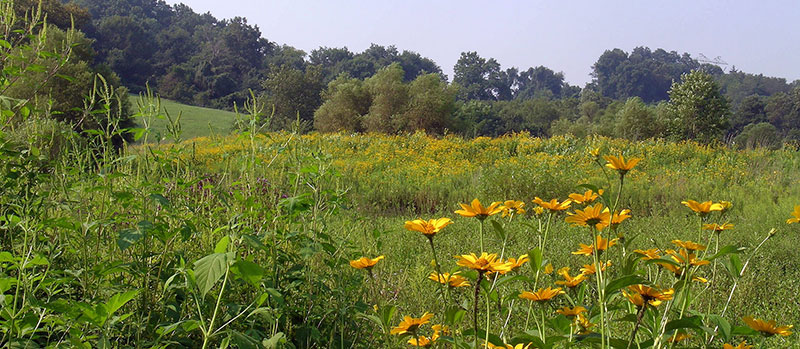Streamside Forest Buffers Preserving Water Quality: The Stroud Water Research Center Project
Protecting the quality of waterways in the county is important for many reasons. They serve as the source for drinking water, as well as support our agricultural industry and a broad spectrum of flora and fauna. Waterways also carry sediment and pollutants into the Delaware and Chesapeake Bays, which are already stressed by excess nutrient loads, turbidity, and other pollutants. The establishment of a network of protected forest buffers along ponds, lakes, wetlands, and streams can improve water quality and support environmental policies of Landscapes2.

Riparian buffers involve an area of trees, usually accompanied by shrubs and other vegetation, adjacent to a body of water designed to maintain the integrity of stream channels and shorelines. These buffers help to 1) reduce the impact of upland sources of pollution by trapping, filtering and converting sediments, nutrients, and other chemicals; and 2) supply food, cover and thermal protection to fish and other wildlife.
Studies by internationally acclaimed Stroud Water Research Center have shown that healthy forests bordering streams not only prevent numerous pollutants from reaching the water, but also multiply the stream's natural ability to cleanse itself of pollutants that do make their way into the water. On a small farm that is typical of many in the Chesapeake Bay watershed, best management practices including contour farming, terraces, and grass waterways work in tandem with a swale and forested buffer to protect the stream--and therefore, the Chesapeake Bay.
"The science is now clear," says Bernard Sweeney, PhD, Director of the Stroud Water Research Center, "that widespread implementation of streamside forest buffers is one of the simplest, most cost effective approaches to eliminating many of the problems of the Chesapeake Bay..."
Learn More
The Stroud Preserve riparian reforestation project is a demonstration of the three-zone Riparian Forest Buffer System developed by the U.S.D.A. Forest Service.
Initiated in 1992, the project involves three experimental agricultural watersheds in the Stroud Preserve, a southeastern Pennsylvania farm protected by conservation easements. The streams are in the drainage of the Brandywine River, which flows into the Delaware Estuary. Learn more about this project.

